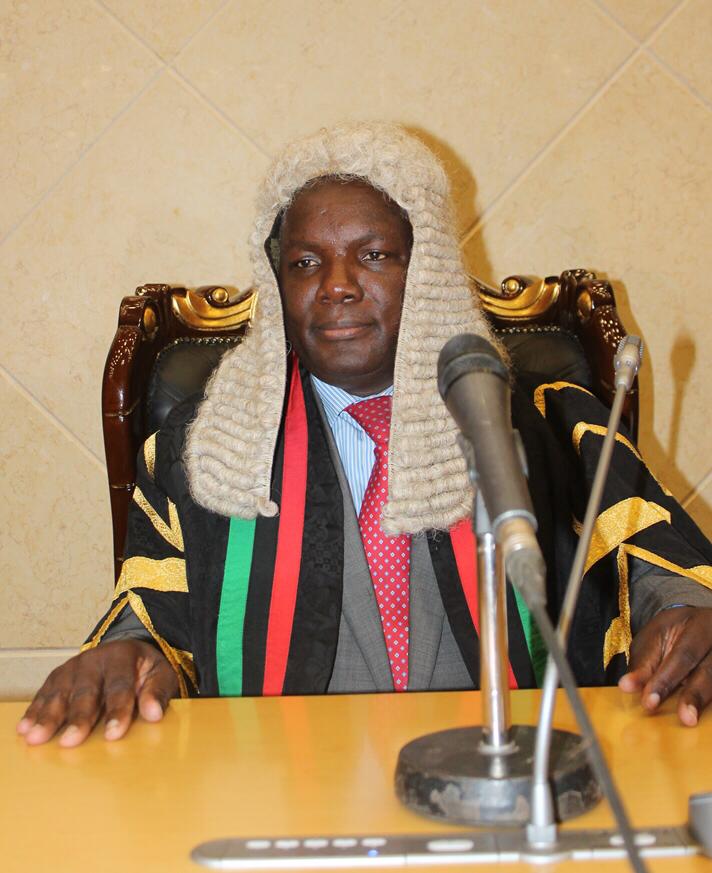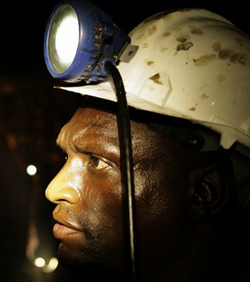A 2012 Malawi National Export Strategy details that Malawi produced minerals worth K21.9 billion in 2010 and K23.7 billion in 2011. Not only does the strategy add that Malawi exported K17.8 billion in 2010 and K18.6 billion in 2011; it further shows that mining exports were worth $114 million in 2010, equivalent to 10 percent of all exports and $123 million in 2011.This is why, especially with the commissioning of the Kayelekera Uranium Mine in Karonga in 2009, mining’s contribution to the economy tripled from three percent in 2003 to 10 by 2013.

The fate of Kayelekera has hampered the Malawi economy
This sounds like great news for Malawi as it represents a giant step in the country’s quest to diverse its economy from tobacco.
However, there is a deafening public outcry that despite such lucrative growth in the mining sector, its benefits stop at published government figures.
“There is little, if not nothing, that, as a country, we can show for as a product of mining activities in the country.
“Each and every day we hear of licences being awarded to mining companies; we see mining companies extracting our resources; but poverty in the country continues to deepen.
“Our friends in Zambia are benefiting from copper. Look at South Africa and their gold. Or even Zimbabwe.
“We use to go to these countries to work in mines. Whatever I have today is from the proceeds of my work in Zimbabwe and South Africa. But how many Malawians can own what I have from their minerals?” says Moses Ngwira, 84, a local from Mabulabo in Mzimba.
Such sentiments, regardless of age and geography, can be heard across Malawi. This, somehow, explains why there are always protracted conflicts between communities and mining companies in almost every site where mining exploration or extraction is taking place in Malawi.
The question, however, is: How far true are these sentiments?
The case of Kayelekera gives a good ground for analysis. In 2009, an Australian company, Paladin Limited (PAL), after being granted a mining licence in 2007 by government, commissioned mining of uranium at Kayelekera, a village located 50 kilometres from Karonga Boma.
With $500 million invested, Kayelekera, arguably, became the largest single mining development project in Malawi. Coming from a background where mining was not considered a development priority in Malawi, Kayelekera reignited the forgotten debate on the viability of the extractive industry in Malawi’s development.
The result was a gold-rush.
“Everyone wanted to try his or her luck. Who doesn’t want to get rich? The coming of Paladin created a huge rush for fast ways of improving your life. In fact, we all thought Kayelekera will no longer be a distant village in the remotes. It will turn into a town,” Peter Mwaipolo, 47, told me in an exclusive interview in 2011.
Mwaipolo was not born and raised around Kayelekera—which is an amalgamation of four villages namely, Sere, Mbutuka, Nkhachira and Chiteka. He is from Kaporo, the northernmost community in Karonga. Just like thousands that left their homes and settled around Kayelekera in 2009 to search for fortunes, Mwaipolo came strictly for business.
“I had a grocery. I thought it could be vibrant here because of the mine; there will be a lot of people with steady income. And again, I also won a tender to be providing sand to the mine,” he told me.
In the first years of the mine, he admitted, his wish was being granted.
“There were a lot of people resident here. A number of them were working at the mine. Business was booming,” he says.
In six months, he added, he also built a house at his home in Kaporo.
But when I visited Mwaipolo in 2011, his business was not as vibrant and hopeful as he used to be.
“I only have a single grocery, now. And you can see the stock isn’t that vibrant. The business is shrinking,” he told me.
“At first, the mine employed a lot of unskilled labourers during the construction phase. All these people—both from here and those from other parts of the district—were resident here. But with time, the company was employing more technocrats and firing the unskilled.
“So most of the people who used to buy our goods have left. Even worse, today, the company provides free transport to the Boma every day to its workers. This means even those that are still working and used to live here have relocated to the Boma. It is there where their families are, and again, where they are building their homes and businesses,” he said.
The Kayelekera villages, then, looked desperate and poor. You could count well-built houses with corrugated iron sheets.
In fact, most of the houses you saw at Kayelekera Market were built by Mota-Engil to be used by accommodation for its workers during the construction phase of the mine. The biggest one was two-roomed, built of mud, grass-thatched and its height is quite eluding to fit a grown up. This is the one Mwaipolo rented as a grocery.
The tragedy of it all was that Kayelekera—riddled with tiny, falling thatched houses and shacks—was touted years ago that, with the mining happening adjacent to it, will turn into a town. In fact, some banks started to troop there. NBS Bank had an agency which, at the time of the reporter’s visit, was not operating. Though quite an appealing structure, the NBS Bank looked an odd one out, standing amid small, falling thatched houses and squatters all over.
Of course, I saw a primary school that Paladin renovated and built and some four teachers houses. But beyond that, the communities, Mwaipolo told me, ‘cough K800 to get to the nearest health centre in Wiliro’.
Unarguably, the general feeling I got, then, was of a village extracting poverty in adjacent mines of wealth.
I returned to Kayelekera last week, three years after the last visit in 2011 and, almost five months after the closure of the mine.
I did not find Mwaipolo. The village had become deserted: no shops, no beer-halls, no sound of stereo equipment; just dead and silent.
“There is no life here,” a local told me, “everything and everyone is gone. We have returned to where we were before the mine came.”
They still do not have a health centre. Not even a better road to connect them to the Boma. No safe water. No secondary school. No market. And above all, still without electricity.
A 2013 study by the Norwegian Church Aid titled Malawi’s Mining Opportunity: Increasing Revenue, Improving Legislation, provides critical revelations about the scale of loss from Kayelekera.
The study details that Malawi gave Paladin “significant tax concessions and the fear that Malawians are gaining little from the agreement.”
“Government reduced Paladin’s corporate income tax rate, abolished its obligation to pay Resource Rent Tax, reduced its royalty rate to an initial 1.5 percent [compared to national rate of 5 percent], gave it other tax concessions and set these in stone for ‘at least’ 10 years.
“In return, government acquired a 15 percent stake in the project,” reads the study.
The study, then, conclude that with such an agreement, “it means that Paladin is paying very little in tax”.
The study further estimates that revenue losses to Malawi from the tax regime given to Paladin for its Kayelekera Mine are around $205 million, and could be as high as $281 million, over the 13 years of the project.
“This amounts to a mean average of $15.8 million a year (K6.5 billion) but which could be up to $21.65 million a year (K8.9 billion),” shows the study.
If one could estimate, the K6.5 billion a year could pay district councils to more than double their procurement of drugs or more than double the allocation in the budget for recruitment of 16 000 teachers for primary, secondary and special needs education.
What emerges from the Kayelekera story is that there is a lot of wealth being generated from the country’s extractive industry and, though figures shows a growth in the sector, the benefits to Malawians is marginal.

.jpeg&w=60&q=100&h=60)




.jpeg&w=60&q=100&h=60)





